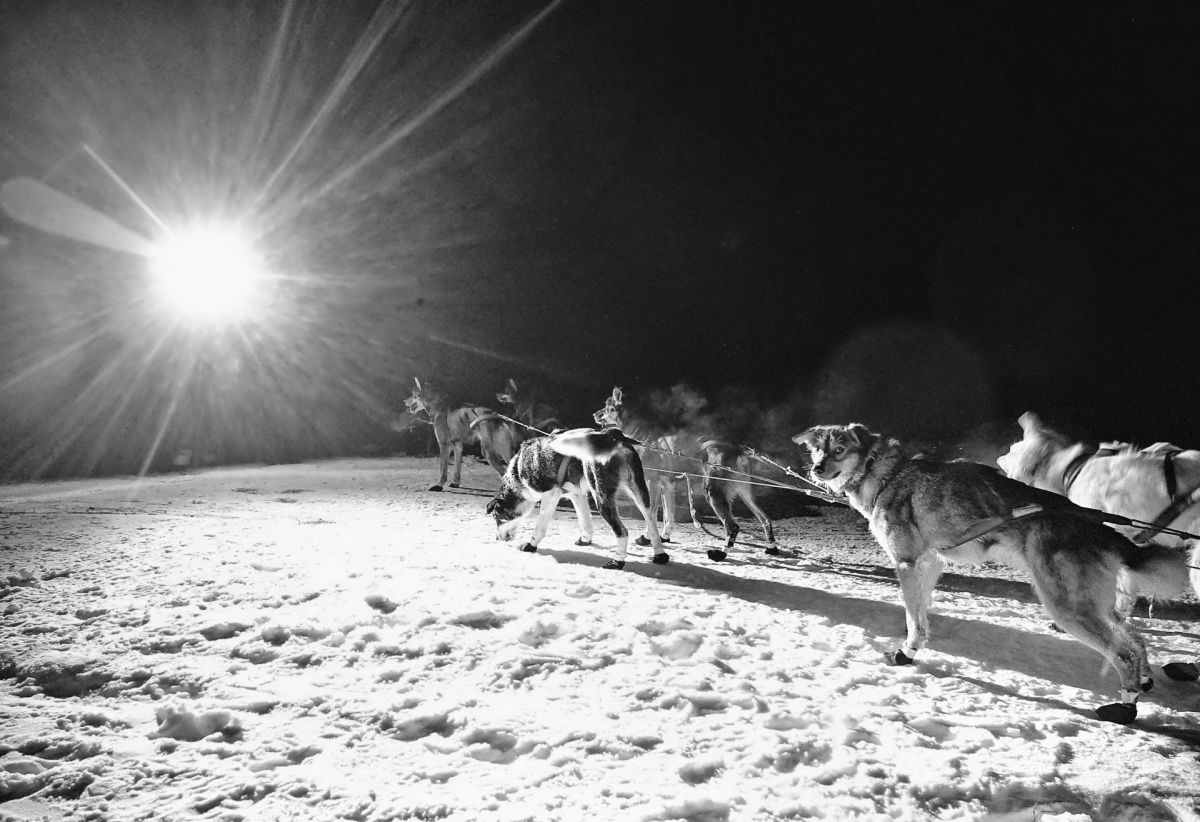Two Weeks in Alaska, Photographing the Iditarod
Full Frame is Sports Illustrated's exclusive newsletter for subscribers. Coming to your inbox weekly, it highlights the stories and personalities behind some of SI's historic photography.
To get the best of SI in your inbox with our weekday newsletter, sign up here. To see even more from SI's photographers, follow @sifullframe on Instagram.
If you missed last week's edition on Jimmy Butler's SI Kids cover shoot, you can find it here.
When Sports Illustrated photographer Erick W. Rasco landed in Alaska to cover the Iditarod in March 2019, he figured he’d find a way to maneuver around the vast state to capture the 47th running of the iconic annual sled dog race.
“This was two weeks on a thousand-mile trail,” Rasco says. “And I had no idea what I was in for.”
He quickly realized that nothing about this assignment would prove simple. First, there was packing — his camera bag and duffle needed to be light enough for him to be as mobile as possible but have enough equipment to make the pictures he knew were out there.
Rasco balanced his three camera bodies and four lenses with extra clothes and a sleeping bag. He also had to improvise, converting construction lights into photo equipment, for example.
“On a lot of these shoots,” he says, “I don’t take actual photo-lighting equipment. I tend to go to a Lowe’s or Home Depot and buy cheaper, portable light stuff that can also be potentially ditched.” (An especially important consideration as the 15-year SI veteran says he’s notoriously rough on his photo gear.)
Once he had had his equipment in order — makeshift and not — Rasco had to figure out how to get to the race’s various checkpoints.
“The first couple of days were really stressful because I had no idea how to get around and how to maneuver or where I needed to go,” Rasco says. “It wasn’t until I was on the ground and talking to people that I realized what I had to do.”
The day the race started, Rasco started calling around for bush pilots to take him to the smaller checkpoints, something Rasco now says he should have been doing about a year in advance. By that time, everyone was already booked. The bush pilot phone tree eventually led him to one pilot who ended up having to make a supply run to a checkpoint in Rainy Pass. So, Rasco joined the pilot and bags of cattle feed as the flight’s only passenger, flying over roadless Alaskan terrain on a tiny plane fitted with skis that landed on a frozen lake surrounded by mountains “in the middle of nowhere,” he says.
Rasco shot mushers, sled dogs and volunteers all night as they passed through the checkpoint.
“You don’t want to stress out the dogs,” he says. “They have to eat. They have to get checked. They have to sleep. So it’s that balance of getting close but not too close, and you just don’t want to be invasive.”
During his hours shooting the teams, Rasco was able to capture an intimate moment between a veterinarian and a dog in Unalakleet. Nose-to-nose, they seemingly stare into each other’s eyes with the scene’s only light emanating from the veterinarian’s headlamp.
“In several places, because the temperatures were warmer, the dogs weren’t dealing with running on a snow trail. They were running through water, through slush. So their feet are soaked. Their coats are soaked. They need rest and to eat. They’re athletes themselves,” Rasco says, adding that each team has two or three veterinarians checking every dog for a variety of potential issues.
Despite the days spent “completely off the radar,” the nights on the floor of a church’s gymnasium, the naps in snow banks and the stress of trying to figure out not only where he needed to go but also how to get there, Rasco says “that’s the kind of stuff I absolutely love.”
“It is that combination of sport and travel and the cultures that you’re around,” he says. “Part of the story is how you get from place to place and immerse yourself into that race or that event. It’s definitely one of my most favorite things I’ve done.”
The 2021 Iditarod begins on Saturday, March 6. To read more about Rasco’s work covering the race, look through this photo essay.













